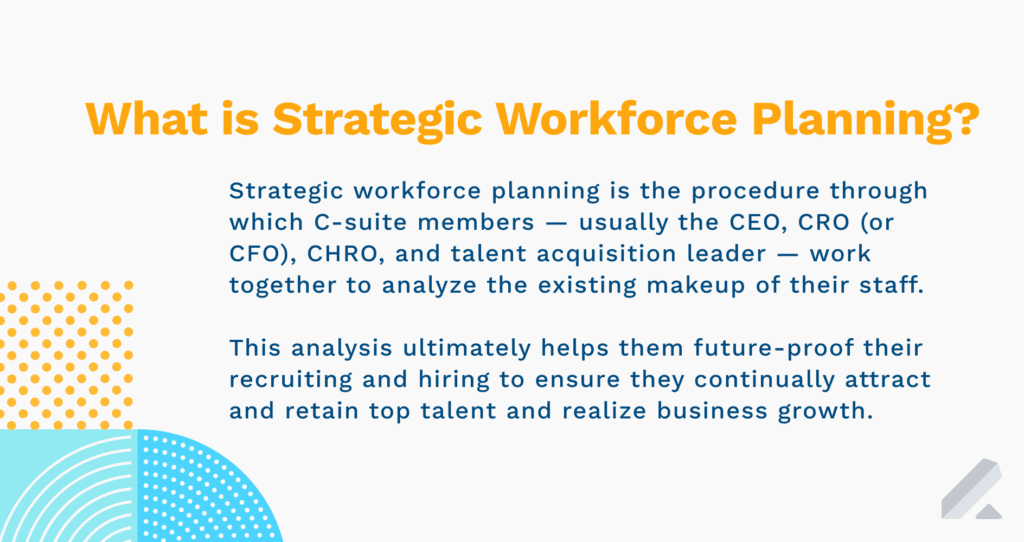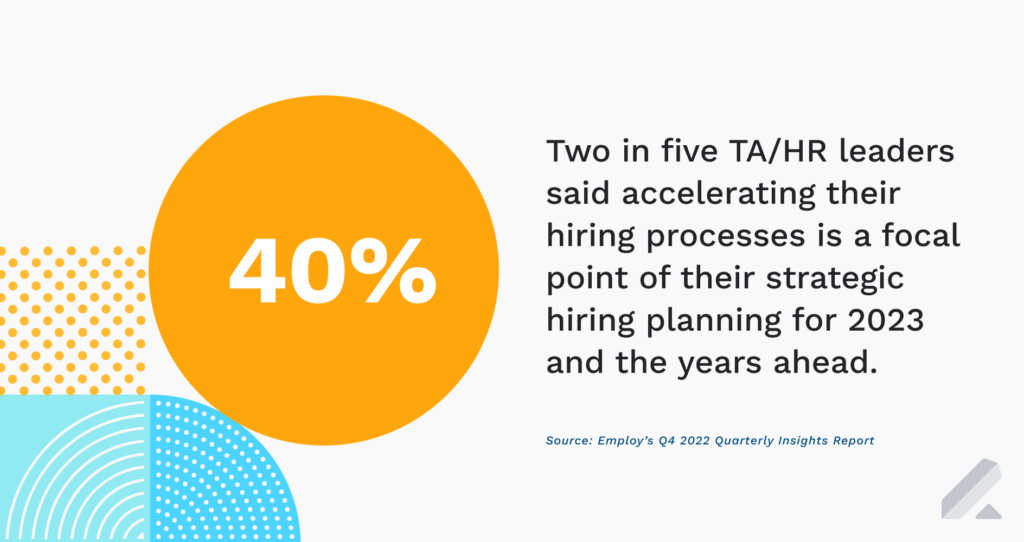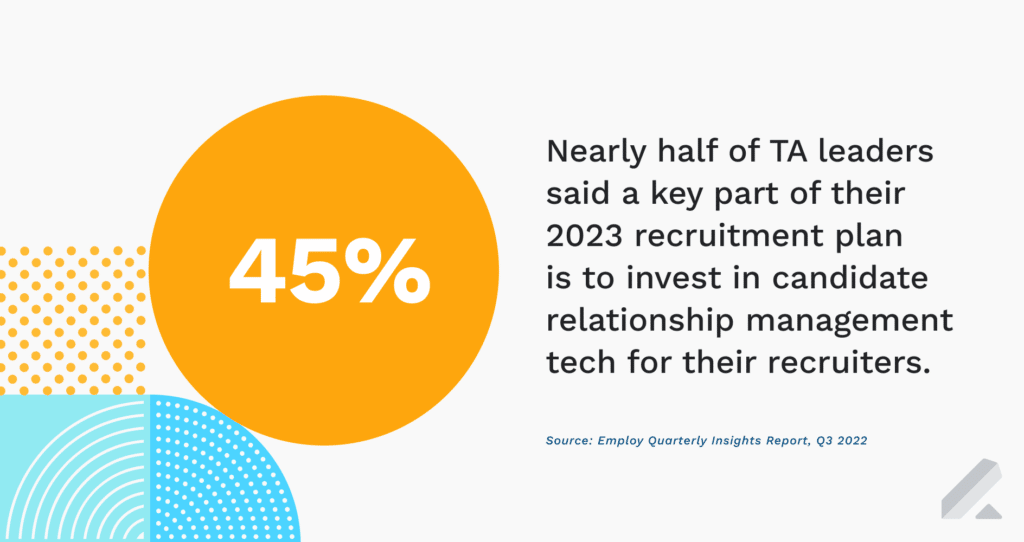The most successful strategic workforce planning processes are agile and ongoing.
Executives, HR leaders, and talent acquisition directors use this approach for their annual workforce management planning (i.e., identifying current and future talent needs and opportunities for growth).
However, it’s not a one-time task.
Rather, they must continually adjust their workforce planning models, given long-term goals tied to their business strategy and headcount needs change.
Executive coach and organizational development expert Roxi Bahar wrote for SHRM about how effective workforce planning strategies are relational initiatives, not a transactional ones.
That means those who implement such an action plan can’t treat it as a one-off activity.
These stakeholders must instead realize it’s a continuous, strategic human resources management undertaking that requires close collaboration to achieve goals.
Specifically, both qualitative goals (e.g., building a diverse and highly productive workforce) and quantitative goals (e.g., scaling headcount, growing revenue).

What is strategic workforce planning?
Strategic workforce planning includes C-suite members — usually the CEO, CRO, CHRO, and TA leader — working together to analyze the existing makeup of their talent pool and staff. This helps them determine their workforce “supply and demand,” so to speak.
More to the point, it helps them determine how they can future-proof their recruiting and hiring to meet future goals. These leaders’ aim is to ensure they continually attract and retain high-performing talent, drive down employee turnover, and realize their target level of organizational growth, and see their distinct annual business plan come to fruition.
The main goal? Assess one’s human capital conducting a skills gap analysis using workforce analytics and gauging individual and team performance.
Scenario planning is also factored in this talent management strategy. For example, running through a scenario in which 10% of Marketing quits in a 30-day period can help you craft a workforce plan with guidance on what to do under these circumstances.
Similarly, if you have an aging workforce — particularly in the C-suite — you can (and should) have in-depth conversations around succession planning to ensure you have a list of internal team members you can potentially engage for executive roles.
Ultimately, the main benefit of workforce planning is just that: planning. Your business needs to be prepared to address any and all headcount needs that do and could arise.
Put another way? Strategic workforce planning is an all-important endeavor that dictates the success of a company in both the near and long run.
“Expectation-setting is really important, whether you’re reporting up to just your manager or the board is letting you know that this stuff may may change and that the [workforce] plan … is not the guaranteed execution path,” said CloserIQ VP Operations & Strategy Jason Lalk.

3 pros of a strategic workforce planning strategy
Your strategic workforce planning may not always lead to the intended results. But, the approach is necessary to employ to realize your executive team’s desired level of growth.
Here are three of the biggest benefits of operational workforce planning.
1) Alignment with strategic business objectives
Your business has strategic goals that impact every team. That includes talent acquisition.
Addressing workforce gaps. Focusing on succession planning. Filling critical roles for each team. These are just some of the recruiting- and hiring-centric considerations your e-staff must account for when developing their annual business and hiring strategy.
You TA team can use these goals as your North Star when setting your recruiting goals and implementing your talent strategy to ensure you contribute to business growth.
2) Concerted focus on future workforce needs
Insight into your C-suite’s business goals can help ensure your recruiters know the type of talent they must source and present to hiring managers to future-proof the workforce.
Let’s say you work for a software firm. The company plans to roll out a new tech offering in six months. Knowing this, your executive team uniformly agrees this requires investment in more programmers, developers, and engineers.
But, your talent team needs to know much more info than just job titles to fill.
You also need hiring managers to provide their input into what the “ideal” individuals to fill these roles look like. (That is, experience level, certifications earned, and skill sets.)
Only when you’ve had a strategic workforce planning session with hiring managers can your talent team identify and engage relevant applicants and sourced talent.

3) More efficient and predictive hiring efforts
The top workforce planning strategies help orgs improve efficiency and forecasting.
Efficiency
Knowledge of growth goals and headcount needs simplifies recruiters’ jobs. They can set up the appropriate workflows to streamline their sourcing, nurturing, and interviewing.
(That is, key areas of their day-to-day work.)
Using an ATS + CRM that with automated workflows, like LeverTRM, can help recruiters can set up rules and triggers to filter out applicants that don’t meet the criteria for a role.
Forecasting
Unified workforce planning also helps business leaders better predict future hiring results.
For instance, historical candidate and employee data — data that can ideally integrate with your org’s primary TA tech — can give you the forecasting abilities of a sales leader.
This leads to a more proactive recruiting approach than a reactive one. That’s because you can make smarter decisions based on accurate, timely insights tied to existing employees and engaged prospects in your candidate pool.

Tips for effective strategic workforce planning
Want to nail your strategic workforce planning approach (and ensure you hit pipeline and headcount goals laid out by leadership)? Here are a few tips to help you succeed.
Coordinate closely with HR and hiring managers
Silos are the enemy of progress. They deter effective collaboration among those who need to work together to achieve short- and long-term business goals.
One example? Hiring managers, TA, and HR must work together (and speak often) to coordinate efforts around attracting and retaining talent.
BambooHR Sr. TA Partner Sarah Bradshaw said it’s vital for these three facets of the hiring team to communicate and collaborate cross-functionally throughout the recruiting process.
Doing so ensures everyone is up to speed on the latest progress as it relates to filling roles.
Sarah added it’s vital to work from the same source of recruiting truth — preferably, a TA suite that syncs with the company’s HRIS — to make it easy to share data, updates, requests, and notifications as candidates’ pipeline statuses change.

Analyze your recruiting and hiring KPIs regularly
A key area of workforce planning analysis is evaluation of your core metrics.
If you’re a talent acquisition leader, you can review the types of candidates your sourcers add to your talent pool to ensure they match the impact- and background-related criteria laid out by your hiring managers and executives.
Suppose the prospects they source usually aren’t high-quality and in alignment with the role-based needs laid out by hiring managers. In that case, tell them to source from only the most fruitful job boards and career communities where quality leads are often found).
Everyone on your TA team should be able to easily track these recruitment KPIs. But, it’s just as crucial for hiring managers to check in on data and insights for roles they’re trying to fill.
That’s the only when they can stay abreast of recruiters’ performance and progress with sourcing and nurturing leads for available positions.
Visual Insights in LeverTRM, our built-in talent analytics solution, offers out-of-the-box, easy-to-navigate dashboards — including one dedicated to hiring managers.
This dynamically refreshed recruiting dashboard shows hiring managers where target prospects of interest are in the recruitment funnel (e.g., specific interview or offer stage).
They can also use Lever Nurture to view the latest candidate engagement. For instance, Lever Nurture provides insights related to talent outreach (e.g., email opens, clicks, replies).
Work with an RPO firm to help execute, if needed
You may not have the in-house recruiting bandwidth to achieve the target hiring quotas agreed upon during your joint strategic workforce planning sessions.
In this case, turn to a recruitment process outsourcing (RPO) firm to aid your sourcing, nurturing, and screening efforts to lighten the recruiting load.
You may not need an RPO to take over your end-to-end recruitment process. But, contracting an agency can help you achieve your workforce planning goals.
The key is working with the right RPO agency. For instance, you’ll want a reputable firm with a proven track record of finding and converting qualified candidates.
Watch our on-demand workforce planning webinar to learn how human resources and talent acquisition can work together to achieve their shared headcount goals.



